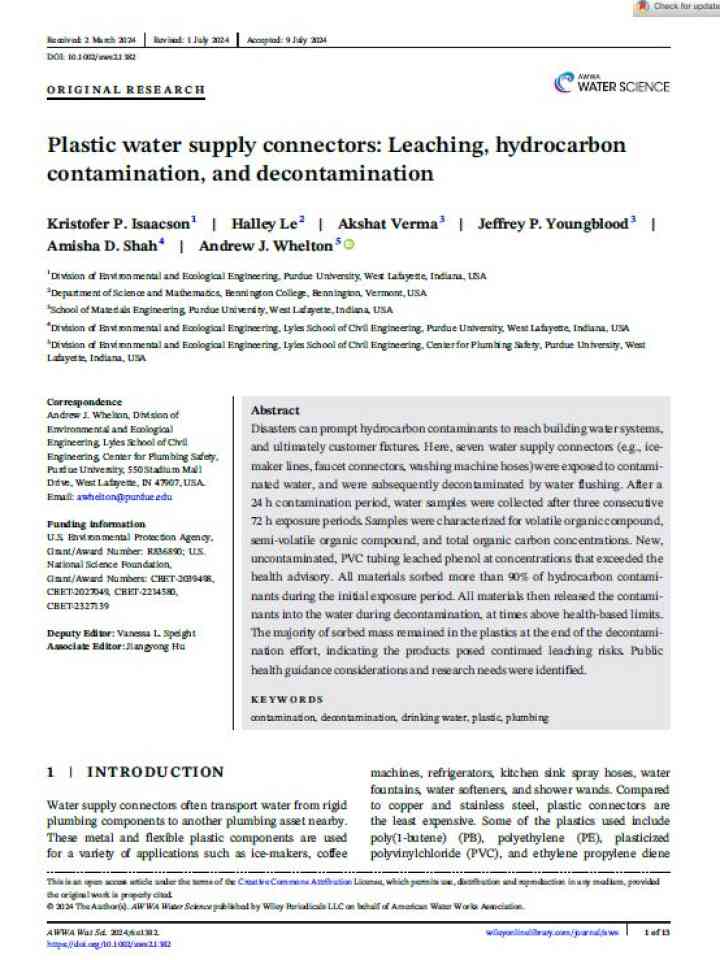Plastic water supply connectors: Leaching, hydrocarbon contamination, and decontamination
This report focuses on understanding building water system plumbing contamination caused by disasters and man-made accidents and efforts to return the plumbing to safe use. This work was prompted by questions by health officials about where volatile organic compounds, or VOCs, go when VOC contaminated water enters plumbing. High levels of VOCs in drinking water can enter plumbing after wildfires and chemical spill damage water systems, and from interior building backflow incidents. Here, water supply connectors (e.g., ice-maker lines, faucet connectors, washing machine hoses) were examined.
New plastic tubing exceeded an acute drinking water safety limit, and after contaminated drinking water exposure, many products were unable to be decontaminated by water flushing. All materials sorbed more than 90% of VOCs during the initial exposure period including benzene. All materials then released the contaminants into the water during decontamination, at times above health-based limits during the 9 day decontamination period. The majority of sorbed mass remained in the plastics at the end of the decontamination effort, indicating the products posed continued leaching risks. Public health guidance considerations and research needs were identified. Finally, the report makes recommendations to lessen impacts, conduct propert water sampling post-incident, and expedite community response and recovery.
Explore further
